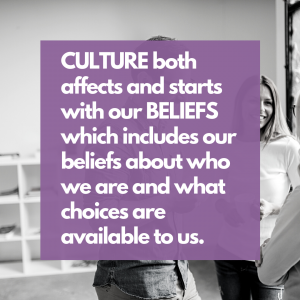Every business leader wants to develop and nurture an effective organizational culture, but many feel stuck when their efforts don’t move the needle. Because unfortunately, with culture change, you can’t just flip a switch. You can’t just buy a bunch of beanbag chairs and bring in a suggestion box and expect to create an effective culture. To change culture, you must first understand what it is.
At Gallaher Edge, we help leaders intentionally design, manage and control their culture. Many culture change initiatives struggle to accomplish their desired goals because not many people understand how culture is truly created.
Organizations Are Complex Adaptive Systems
To create an intentional culture, start with understanding the organization.
All organizations are systems, so you’ll want to apply the same principles and tools that are used to analyze and improve technical systems to address any issues with an organization’s culture.
But organizations aren’t simple systems – they are complex adaptive systems because they involve people. Complex adaptive systems are challenging because when you push on them, they push back. Unlike other systems, they adapt to whatever it is that you are trying to do to them so that you may not get the response you anticipate from your action. An analogy we like to use here is throwing a rock (a simple system). The laws of physics let us calculate very precisely where a rock will land if we toss it given the precise starting point, angle and velocity. That is what it is like working with a typical system – you are able to predict your results and as long as you execute effectively you’ll get the results you expect. However, if I replace the rock in this example with a bird (adaptive system), suddenly everything changes. The bird is now an adaptive component of the system. No matter how precisely or accurately you perform the calculations, when you toss that bird, you will be wrong.
People in organizations, just like the bird in the example above, have independence. The rock was subject to the laws of physics, but the bird was making her own decisions. In complex adaptive systems like organizations, humans also possess independence and can make their own decisions. What makes this challenging is that these decisions may not be in alignment with the larger system goals. In fact, there can be multiple competing goals that can emerge within the system agents at different levels – individual, team, department, and organizational. You’ve experienced this anytime departments are struggling to collaborate because they have different priorities and are not supporting one overarching goal. Often these competing goals even exist within us as individuals (like wanting to keep the employee on the team because he’s been there for a decade, but wanting to let him go because his performance is not keeping up with the pace of the team) because, after all, we are complex organisms.
When working with a complex system, rather than trying to force the solution through throwing the bird where we want it to go (which will likely just increase policy resistance), a more effective approach is to understand the systemic drivers or motivators of the individual agents and use these to help in achieving the larger goal. Understanding the individual motivation of the bird, the best strategy is probably to place a pile of birdseed at the location you wish the bird to land and then simply open your hand and let the bird fly there on its own. So how do you apply that same principle to human behavior in order to design organizational culture? Certainly, a pile of birdseed won’t be as appetizing for humans…
Culture is an Emergent Property
A key part of creating culture is getting clear about what behaviors you want in your organization. While culture is an emergent property of the organization, it exists between the ears of the employees. Engineering and complex systems provide the architecture and tools for analyzing and managing organizational culture, but the ability to actually make the necessary connections to create and manage culture comes from the field of psychology. Humans, in and of themselves, are complex, and create a whole field in and of itself known as psychology, and more specifically organizational psychology. To affect change within an organizational culture, it’s essential to leverage the science of human behavior, including what needs and desires are the biggest drivers of human behavior in organizations.
Our team at Gallaher Edge helps our clients understand how the science of human behavior works to create organizational culture. Culture is from the inside out, so we help leaders learn how these behaviors are rooted at the self-concept level. This has enabled us to identify the missing links for creating and maintaining a truly effective culture and to create real change within organizations by transforming their cultures.
Want to get notified when our next blog is posted? Join our Leaders Journey email list! You will also receive BIG ideas and insights into leadership and personal growth, AND you’ll be the first to know about special announcements, promotions, events, and more!
Ready to take your leadership to the next level? Get your FREE copy of my eBook, Level Up: 3 Steps to Be a Better Leader. Click here to download!


